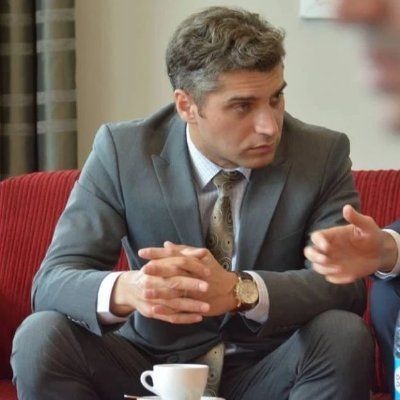Azerbaijan’s bold play: From Belt and Road passageway to global business hub [ANALYSIS]
![Azerbaijan’s bold play: From Belt and Road passageway to global business hub [ANALYSIS]](https://www.azernews.az/media/2025/04/26/add_a_subheading_2.png)
When the Belt and Road Initiative (BRI) was announced over a decade ago, many countries saw their role simply as transit points, conduits for the colossal flow of Chinese goods westward. Azerbaijan, however, envisions something far more ambitious: transforming itself from a logistical waypoint into a thriving center of business, innovation, and investment.
In a recent interview, Azerbaijani President Ilham Aliyev laid out a compelling vision of this future — one that leans heavily on infrastructure built over the past two decades and on Azerbaijan’s strategic position straddling East-West and North-South corridors. But the country’s ambitions go beyond mere geography. The strategy is to build lasting industries along the Belt and Road, drawing in Chinese capital, technology, and entrepreneurship to fuel Azerbaijan’s transformation into a commercial hub.
Already, signs of this pivot are evident. Azerbaijan has established six trade houses in China and begun exporting wine to Chinese markets, a modest but symbolic entry into one of the world’s most lucrative consumer spaces. More significantly, at a recent bilateral forum, Chinese and Azerbaijani companies inked over $300 million in new investment agreements, a figure that Azerbaijani officials believe will soon scale into the billions.
“We want to talk in billions, and I think this is absolutely realistic,” the President said. Sectors like renewable energy, manufacturing, and transportation are at the forefront of Azerbaijan’s push, with the country highlighting its skilled labor force, growing domestic market, and investor-friendly legal environment as key draws for foreign capital.
This approach mirrors a broader global trend among emerging economies participating in the Belt and Road Initiative. No longer content to be passive transit zones, countries like Azerbaijan are seeking to leverage their infrastructure to build dynamic, diversified economies. The idea is simple: if goods are passing through, why not ensure that some of the value stays?
Few countries are as well-positioned to execute this strategy as Azerbaijan. Years of heavy investment in infrastructure, including highways, railways, seaports, and eight international airports, have paid off. The country now boasts one of the largest air cargo operations globally, enhancing its ability to move goods swiftly and efficiently. Reforms in customs administration, particularly digitalization, have slashed the time it takes for cargo to move from China to the Black Sea through Azerbaijan to just 10 to 12 days, a remarkable achievement in a region often plagued by bureaucratic delays.
The result? An 86% growth in transit transportation between China and Azerbaijan over the past year, with officials insisting that this is "only the beginning." Azerbaijan is positioning itself as a safer, shorter, and more efficient alternative to traditional transit routes. In a world increasingly concerned about geopolitical tensions and supply chain vulnerabilities, this message resonates.
Yet, challenges remain. Expanding trade volumes is only one part of the equation. Building the industries and businesses that can sustain long-term economic growth requires deep institutional support, continued legal reforms, and above all, the ability to attract and retain investors in a competitive global environment.
Azerbaijan’s officials are acutely aware of this. Hence, they emphasize the ease of doing business in the country: a favorable tax regime, numerous incentives for foreign investors, and a government eager to facilitate cross-border partnerships. The goal is not just to move goods but to create ecosystems where manufacturing, technology, and services flourish.
Another part of the strategy is regional cooperation. Azerbaijan has launched joint ventures with neighboring countries to streamline cargo movement and create integrated logistics corridors. In the face of global trade disruptions and an increasingly fractured international order, such regional partnerships may offer crucial resilience.
Looking ahead, Azerbaijan’s ambitions seem closely tied to two key drivers: renewable energy and digital transformation. As the world pivots toward greener economies, Azerbaijan hopes to become a significant player in renewables, particularly wind and solar. Simultaneously, by embracing digitalization — in customs, in logistics, and potentially in broader sectors — the country is setting the groundwork for a future economy less dependent on traditional energy exports.
Critics might argue that Azerbaijan’s pivot is ambitious given global economic headwinds and increasing competition from other transit routes, including the northern railways through Russia and the southern sea lanes. However, in an era when supply chain security has become a premium, Azerbaijan’s bet on reliability and efficiency could give it an edge.
Ultimately, Azerbaijan's story is one of evolution: from an energy-exporting economy heavily reliant on oil and gas to a diversified, innovation-driven market strategically situated at the crossroads of continents. By actively participating in and helping shape the next phase of the Belt and Road Initiative, Azerbaijan is staking a claim to a more prosperous, connected future.
As the second decade of the Belt and Road begins, Azerbaijan is making it clear: it does not merely wish to be a bridge between East and West. It wants to be a destination.
Here we are to serve you with news right now. It does not cost much, but worth your attention.
Choose to support open, independent, quality journalism and subscribe on a monthly basis.
By subscribing to our online newspaper, you can have full digital access to all news, analysis, and much more.
You can also follow AzerNEWS on Twitter @AzerNewsAz or Facebook @AzerNewsNewspaper
Thank you!

